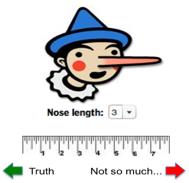
File photograph of Osama Bin Laden
© 1998 Reuters
New research entitled “Emotions expressed in speeches by leaders of ideologically motivated groups predict aggression” was recently published in the journal of Behavioral Sciences of Terrorism and Political Aggression.
The research suggests that when leaders use rousing speeches to evoke powerful emotions, those emotions may predict when a group will commit an act of violence or terrorism.
Dr. David Matsumoto, along with Drs. Hyisung Hwang and Mark G. Frank analysed speeches delivered by government and found that activist and terrorist leaders’ expressions of anger, contempt and disgust spiked immediately before their group committed an act of violence.
“When leaders express a combination of anger, contempt and disgust in their speeches, it seems to be instrumental in inciting a group to act violently”
As part of a five-year project funded by the U.S. Department of Defense’s Minerva Initiative, Matsumoto and colleagues studied the transcripts of speeches delivered by the leaders of ideologically motivated groups over the past 100 years. The analysis included such speeches as Osama bin Laden’s remarks leading up to the bombings of embassies in Kenya and Tanzania.
The researchers analyzed the pattern of emotions conveyed when leaders spoke about their rival group and examined speeches given at three points in time before a specific act of aggression. They compared the results with the content of speeches delivered by leaders whose groups engaged in nonviolent acts of resistance such as rallies and protests.
Among leaders of groups that committed aggressive acts, there was a significant increase in expressions of anger, contempt and disgust from 3 to 6 months prior to the group committing an act of violence.
For nonviolent groups, expressions of anger, contempt and disgust decreased from 3 to 6 months prior to the group staging an act of peaceful resistance.
Matsumoto says the findings suggest a leader’s emotional tone may cause the rest of the group to share those emotions, which then motivates the group to take part in violent actions.
“For groups that committed acts of violence, there seemed to be this saturation of anger, contempt and disgust. That combination seems to be a recipe for hatred that leads to violence,” Matsumoto said.
Anger, contempt and disgust may be particularly important drivers of violent behavior because they are often expressed in response to moral violations, says Matsumoto, and when an individual feels these emotions about a person or group, they often feel that their opponent is unchangeable and inherently bad.
“Understanding the preceding factors that lead to terrorist attacks and violent events may help predict these incidents or prevent them occurring in the first place…studying the emotions expressed by leaders is just one piece of the puzzle but it could be a helpful predictor of terrorist attacks.”
This study was one of the first seven projects funded by the U.S. Department of Defense Minerva Initiative. The Initiative was established in 2008 to fund social science research on areas of strategic importance to U.S. national security policy.
 NBC News.com has purported that they may have the reason why it’s harder for younger generations to mind their P’s and Q’s when interacting with their elders.
NBC News.com has purported that they may have the reason why it’s harder for younger generations to mind their P’s and Q’s when interacting with their elders. According to a “Science of Honesty” study presented at the American Psychological Association’s 120th Annual Convention, lying less is linked to better health.
According to a “Science of Honesty” study presented at the American Psychological Association’s 120th Annual Convention, lying less is linked to better health.